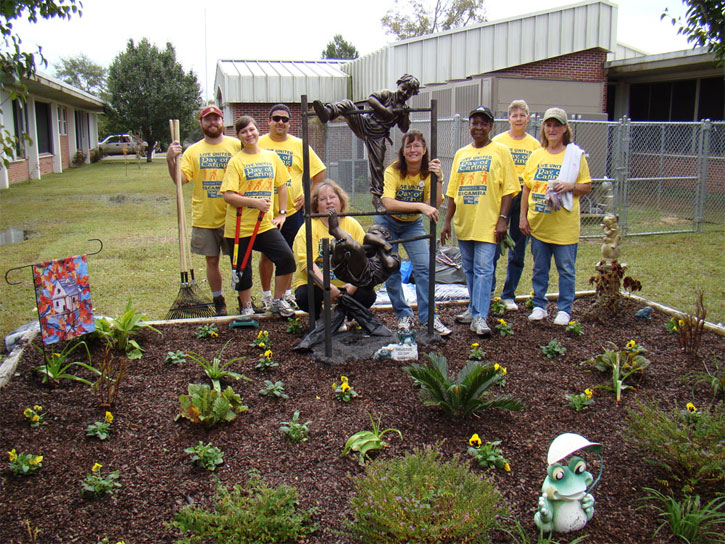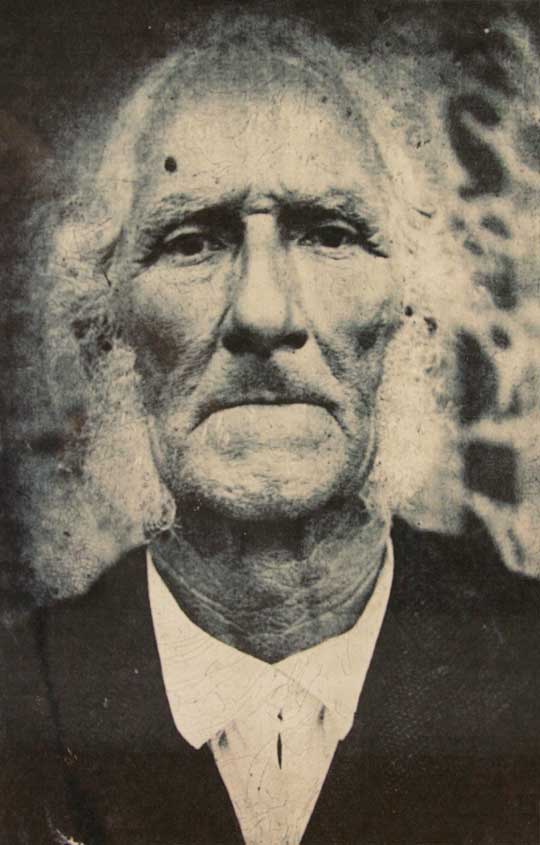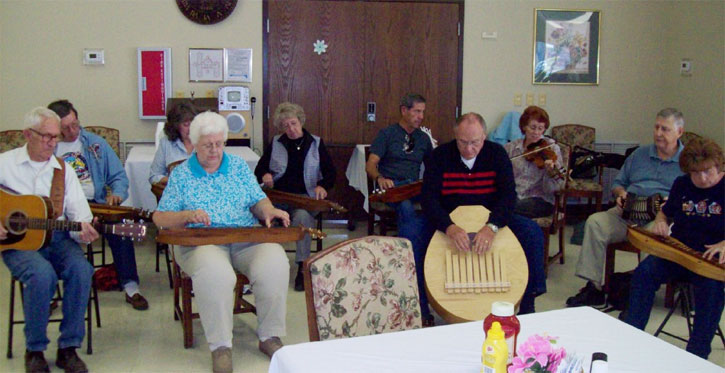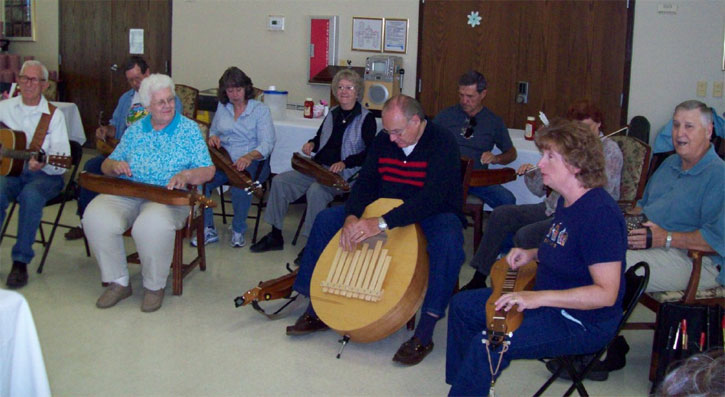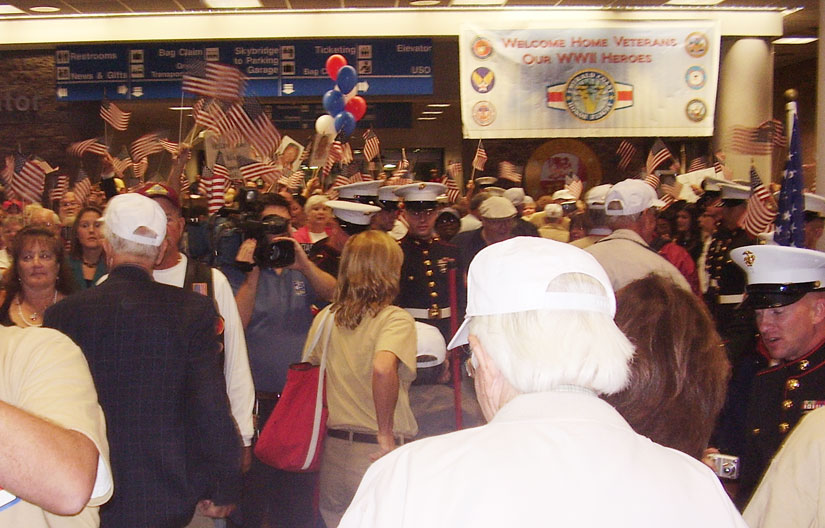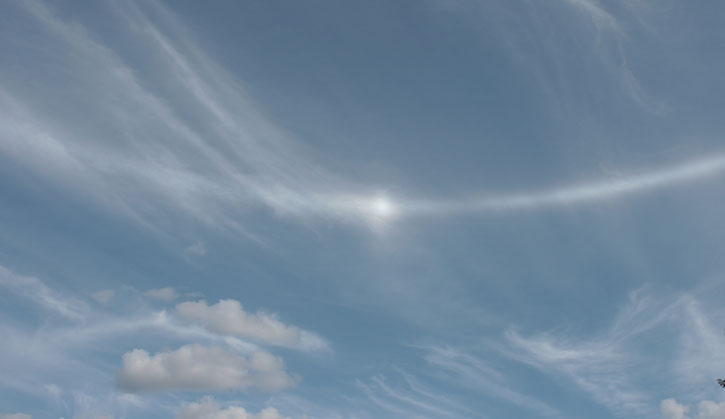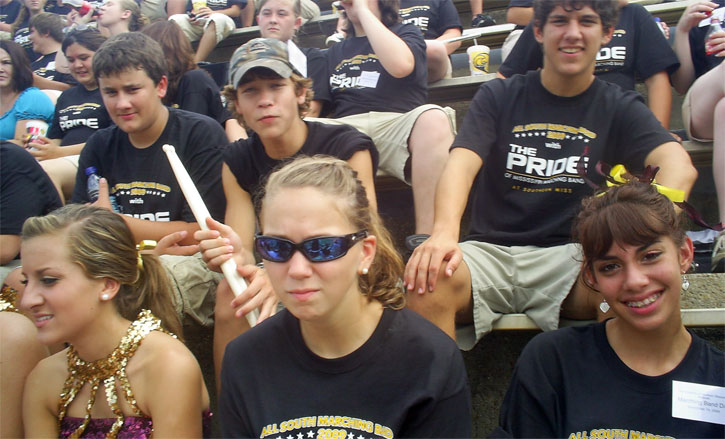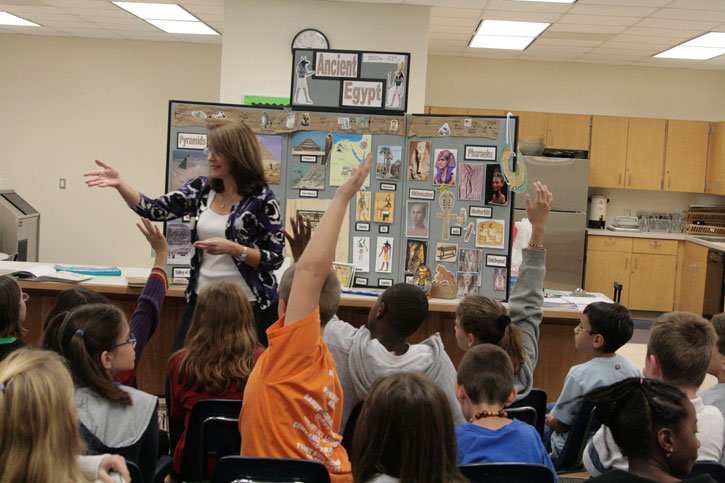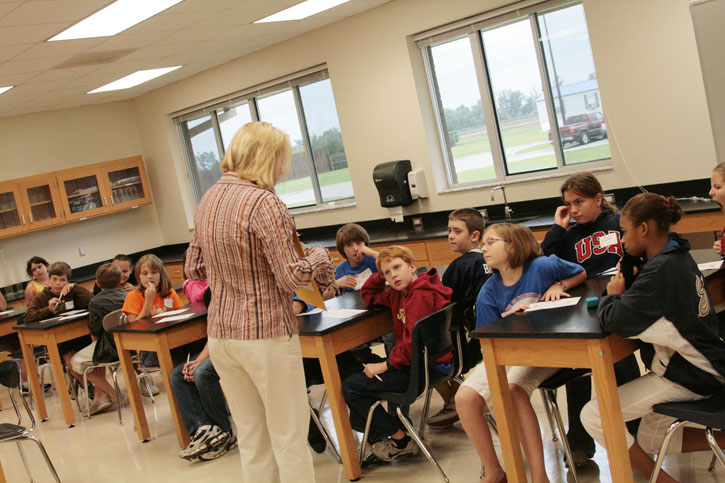Still Time To Plant Those Fall Vegetables
October 25, 2009
Football may be heating up, but the temperatures are going to start cooling down. Just because summer is drawing to a close doesn’t mean that the
vegetable gardener needs to put up his or her hoe and dream of the first red tomato in 2010. Now is the time to start growing some fall and winter vegetables.
 Strike while the iron is hot—seed beets, collards, mustard, turnips, snap beans, broccoli, cabbage and cauliflower as soon as possible. Bulbs like shallots and green onion can also be planted. You can also transplant broccoli, cauliflower and cabbage to get a jump start. Plant garlic in October. Consider interval plantings of the same crop to prolong the season. If you plant a row of cabbage now, think about planting another short row in a few weeks to ensure you have a longer season.
Strike while the iron is hot—seed beets, collards, mustard, turnips, snap beans, broccoli, cabbage and cauliflower as soon as possible. Bulbs like shallots and green onion can also be planted. You can also transplant broccoli, cauliflower and cabbage to get a jump start. Plant garlic in October. Consider interval plantings of the same crop to prolong the season. If you plant a row of cabbage now, think about planting another short row in a few weeks to ensure you have a longer season.
When you transplant some of the more the more tender plants that have been kept under shady areas, you should think about protecting them from the bright sun for a few days and be prepared to water the transplants until they become established. If you seed your row too thick, if you gently pull up the plants, you can sometimes salvage them and put them in another row. Be prepared to give them a little shade and moisture because the root system isn’t well developed.
 A fall garden is open to attack by insects and diseases just as the summer garden. Worms (cabbage loopers and imported cabbage moths) are serious problems on fall cabbage, cauliflower, broccoli, and collards. Control these leaf-eating worms with one of the biological sprays with Bt (Bacillus thuringiensis). It should be reapplied weekly because it will break down in sunlight. Bt acts by producing proteins (deltaendotoxin, the “toxic crystal”) that reacts with the cells of the gut lining of susceptible insects. These Bt proteins paralyze the digestive system, and the infected insect stops feeding within hours. Bt-affected insects generally die from starvation, which can take several days (click here).
A fall garden is open to attack by insects and diseases just as the summer garden. Worms (cabbage loopers and imported cabbage moths) are serious problems on fall cabbage, cauliflower, broccoli, and collards. Control these leaf-eating worms with one of the biological sprays with Bt (Bacillus thuringiensis). It should be reapplied weekly because it will break down in sunlight. Bt acts by producing proteins (deltaendotoxin, the “toxic crystal”) that reacts with the cells of the gut lining of susceptible insects. These Bt proteins paralyze the digestive system, and the infected insect stops feeding within hours. Bt-affected insects generally die from starvation, which can take several days (click here).
Fall vegetables need fertilizer just as much as spring and summer vegetables. Don’t count on the fertilizer applied in spring to supply fertilizer needs of vegetables planted in late summer and fall. Fertilize before planting and side-dress as needed.
Finally, if you really want to take a break prior to the spring crops, at least clean up debris and put your stakes and poles away. The Fall is good time to take a soil test and put out lime for it to have enough time to react for your spring crop. You could even get a row or two ready to plant potatoes come late
January/early February.
Need more information? Call the Escambia County Extension office at (850) 475-5230.
Submitted by the Escambia County Extension office.
Volunteers Lend A Hand In Day Of Caring
October 24, 2009
Hundreds of volunteers took part in the 17th annual United Way of Escambia County Day of Caring Friday.
Volunteers rolled up their sleeves to complete more than 100 projects related to the priorities of the United Way — education, financial stability and health.
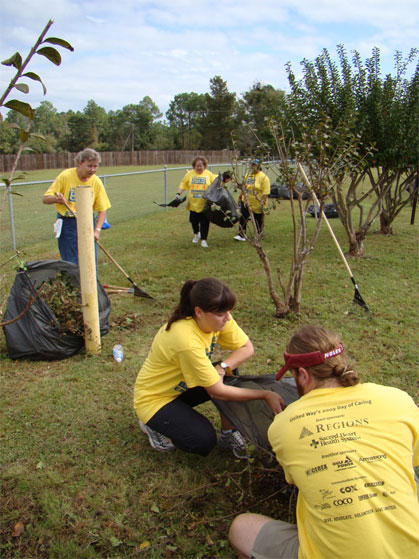 “It gives people the opportunity not only to see the were the need is in the community but also the opportunity to have an impact,” said Kris Thoma, marketing and communications director for United Way of Escambia County.
“It gives people the opportunity not only to see the were the need is in the community but also the opportunity to have an impact,” said Kris Thoma, marketing and communications director for United Way of Escambia County.
In the North Escambia area, about 10 volunteers from the Escambia County Development Services Bureau worked at Jim Allen Elementary. They trimmed trees, weeded and replanted flower beds and cleared the school’s nature trail.
Day of Caring volunteers that were scheduled to take on projects at Ernest Ward Middle School, Northview High School and in the Century area for the Council on Aging were not able to work Friday morning. But those volunteers will schedule a future date to complete their projects, Thoma said.
For more photos from Jim Allen Elementary, click here.
Pictured above: United Way of Escambia County Day of Caring Volunteers worked Friday morning at Jim Allen Elementary in Cantonment. Submitted photos for NorthEscambia.com, click to enlarge.
North Escambia Area’s Significant Earthquake; Could It Happen Again?
October 23, 2009
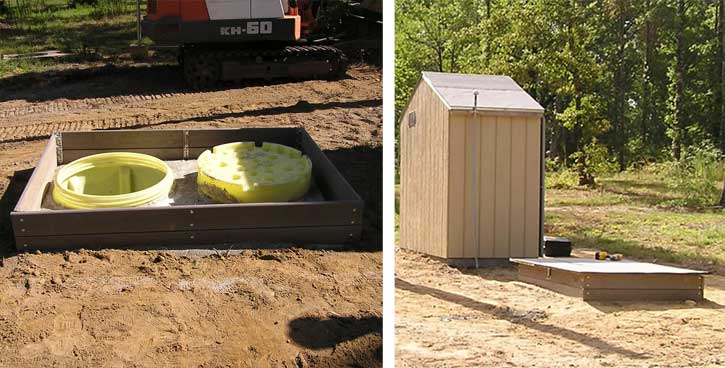
Saturday is the 12th anniversary of a local earthquake that was one of the largest ever reported in Alabama or Northwest Florida, and experts say there is a chance another earthquake could happen again with little or no warning.
At 3:35 a.m. on October 24, 1997, a significant earthquake awoke a large number of people in Escambia County, Ala., and Escambia and Santa Rosa counties in Florida. The quake, which measured 4.9 on the Richter scale, was centered near the Little Rock community in Escambia County, Ala., and was felt as far away as Eglin AFB, and Gulfport, Miss. It was the strongest earthquake in the southeast in 30 years. No significant damage was reported.
The U.S. Geological Survey classifies earthquake intensities. Here is how the October 24, 1997, earthquake measured up across the area, using intensity level descriptions from the Federal Emergency Management agency:
- (VII) Epicenter / Little Rock, Ala.
- People have difficulty standing. Drivers feel their cars shaking. Some furniture breaks. Loose bricks fall from buildings. Damage is slight to moderate in well-built buildings; considerable in poorly built buildings
- (VI) Brewton, Canoe and Lambeth
- Everyone feels movement. People have trouble walking. Objects fall from shelves. Pictures fall off walls. Furniture moves. Plaster in walls might crack. Trees and bushes shake. Damage is slight in poorly built buildings. No structural damage.
- (V) Atmore, Flomaton, Frisco City and Century
- Almost everyone feels movement. Sleeping people are awakened. Doors swing open or close. Dishes are broken. Pictures on the wall move. Small objects move or are turned over. Trees might shake. Liquids might spill out of open containers
- (IV) McDavid, Molino and Walnut Hill
- Most people indoors feel movement. Hanging objects swing. Dishes, windows, and doors rattle. The earthquake feels like a heavy truck hitting the walls. A few people outdoors may feel movement. Parked cars rock.
According to the U.S. Geological Survey, the North Escambia area sits on the Bahamas Seismic Zone (the BSZ). Several earthquakes have occurred along this zone in recent years, but most are too weak to be felt by residents. While not a likelihood, the USGS says another significant earthquake could happen in the area at any time.
Two professors in the Department of Geology at Auburn University, Joan Gomberg and Lorraine Wolf, published a journal article a few years after the earthquake that theorized that the event was actually caused by the oil and gas industry and extraction wells located from Escambia County, Ala, to Jay.
Pictured top: The U.S. Geological Survey installed a seismic monitoring station just north of Brewton following the 1997 earthquake. Pictured below. Yesterday’s data from the Brewton seismic station. Submitted photos and graphics for NorthEscambia.com, click to enlarge.
Molino Family Leaves U.S. On Two-Year Mission Trip
October 23, 2009
The Kent family of Molino departed the United States Thursday to begin what they have termed the “God-sized” adventure of becoming missionaries in Guatemala.
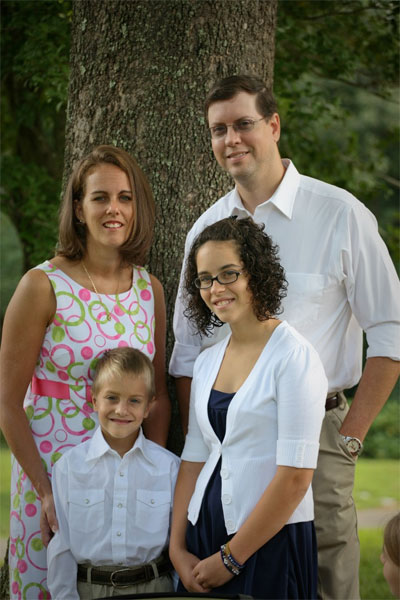 We first introduced you to Max and Julie Kent along with children Megan and Justin back in June. They were holding a weekend yard sale, selling all of their belongings as they prepared to head to the mission field. From their furniture, to their house, to their car, to their household furnishings — it was all for sale.
We first introduced you to Max and Julie Kent along with children Megan and Justin back in June. They were holding a weekend yard sale, selling all of their belongings as they prepared to head to the mission field. From their furniture, to their house, to their car, to their household furnishings — it was all for sale.
In July, they arrived at the International Learning Center (ILC) in Rockville, Virginia, to train for their upcoming mission service. They were commissioned as Southern Baptist missionaries on September 23. And Thursday, they boarded a plane headed for language school in Costa Rica before continuing to Guatemala in the coming weeks.
The Kents were able to spent the last couple of weeks at home, visiting with friends and family before departing the United States. Sunday night, they had the opportunity to share their thoughts and feelings with their church family at Cottage Hill Baptist Church.
“I had spent much of the service…looking over the crowd to see if there was any person that had not had impact on our lives. The truth was that in the eleven years we have attended, everyone there has had a meaningful impact on our family. I guess that’s why we call them our church ‘family’,” Max said about Cottage Hill Baptist.
“So many have asked how they can help us and the greatest way that we know of is in prayer! Pray for us as we work towards learning and polishing our language and cultural skills. In order for us to be effective, we must learn the heart language of those we are going to. First we will acquire the trade language (Spanish) in Costa Rica and then must acquire the local language (Pokomchi) on the field. Pray for the hearts of those the Lord is preparing ahead of our arrival,” he said.
While Max assists another missionary in a small village near Cogan, Guatemala, Julie, who was a fourth grade teacher at Molino Park Elementary, will assist another missionary in Guatemala with teaching math.
This will be the first missionary trip for Justin, 6. For Megan, 12, it will be her third, having been on two international mission trips to Honduras and Ecuador.
“I am looking forward to the unknown and to see what He’s got in store for us,” Max said.
Williams Station Day: Walnut Hill Man Responsible For Founding Atmore
October 23, 2009
A Walnut Hill man’s founding of the railroad supply stop that would later become Atmore will be celebrated this weekend with the annual Williams Station Day.
This weekend’s Williams Station Day remembers Atmore’s past, a past that started with William “Uncle Bud” Larkin Williams of Walnut Hill.
In 1816, John Gaylor settled in the Walnut Hill area on land from a Spanish Land Grant. A great deal of that land was later sold to Williams who began a logging and cattle operation in the Walnut Hill area sometime prior to the Civil War.
Just after the Civil War, in 1866, Williams opened a supply stop along the Mobile and Great Northern Railroad in the area that would later become Atmore. The area around the supply stop thrived, later becoming known as Williams Station. The name of the settlement was changed to Atmore in 1897.
As for Walnut Hill’s Williams, he served as a spy for the Confederacy during the Civil War. He was captured by the Union Army but was later released after he convinced the Union soldiers that he was just an innocent man traveling to Pensacola.
Williams allowed the Florida 13th Cavalry to camp at his Walnut Hill home, which was near the current Ernest Ward Middle School. A number of those soldiers died during their stay and were buried in a small cemetery. That cemetery was located between the current Walnut Hill Community Center and Bradberry Park. It is no longer recognizable.
Walnut Hill’s first log school and a Methodist Church were built on land owned by Williams near the present-day intersection of Highway 97 and Arthur Brown Road. The log church was later rebuilt and named the Annie Jones Methodist Church.
Sources: “Walnut Hill, A Historical Overview” compiled by Billy R. Ward from Escambia County Land Records researched by Robert Glenn Thrower, Sr. and “History of Ernest Ward School” by William Arthur Brown; and from northwestfloridacomm.com, compiled by students at Northview High School.
Pictured: William “Uncle Bud” Williams, the Walnut Hill man that founded Alabama settlement that would later become Williams Station and then Atmore. This photo is believed to have been taken at his 88th birthday celebration in McDavid on February 18, 1895. Click to enlarge.
Dogwood Dulcimers Perform At Century Care, Plan Weekend Jam Sessions
October 22, 2009
The Dogwood Dulcimer Association performed earlier this week for the residents of the Century Care Center. This weekend, they will hold a jam session at Lake Stone.
The jam session scheduled for the weekend at Lake Stone includes:
- Friday
- 6 pm Covered dish supper
- 7 pm Homemade Jam Session
- Saturday
- 1 pm Open stage
- 6 pm Pot luck dinner
- 7 pm Home Jam Session
- Sunday
- 9 a.m. Music Service
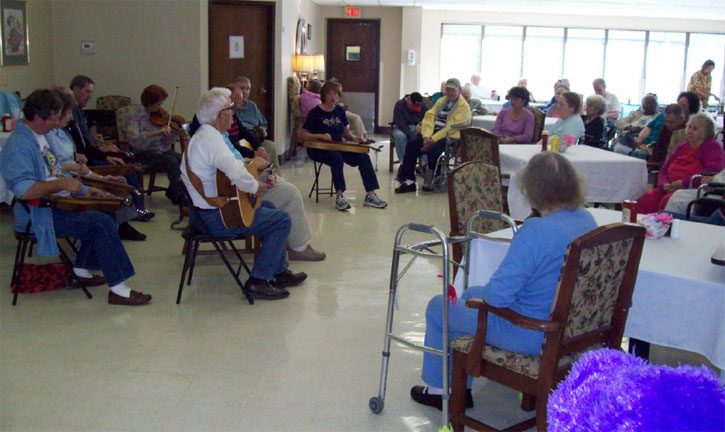 For festival information, contact Yvonne Ward at (850) 626-9981 or (850) 982-1997 or Ed Sapp at (850) 549-3864 or (850) 982-9924.
For festival information, contact Yvonne Ward at (850) 626-9981 or (850) 982-1997 or Ed Sapp at (850) 549-3864 or (850) 982-9924.
The Dogwood Dulcimers invites anyone, including beginners, to play a dulcimer or traditional instrument with them for free. The group meets every Monday 7 p.m. at Trinity Presbyterian Church at 3400 Bayou Blvd., Pensacola and the second Thursday of each month, 7 p.m. at Cottage Hill United Methodist Church at 229 Williams Ditch Road in Cantonment.
Click here for the Dogwood Dulcimer website.
Pictured: The Dogwood Dulcimers perform at Century Care Center Tuesday afternoon. Submitted photos by Mae Hildreth for NorthEscambia.com, click to enlarge.
Through His Own Eyes: WWII Veterans Take Honor Flight To Washington
October 22, 2009
A picture, they say, is worth 1,000 words.
So when just over 100 World War II veterans headed to Washington Wednesday on the Fifth Annual Emerald Coast Honor Flight so that the veterans could see the World Ward II Memorial — their memorial — NorthEscambia.com gave veteran Billy Ward of Walnut Hill a camera. We asked him to take pictures during his day and share them with you, our readers.
The pictures he brought back from Washington show the memorials, Jeff Miller and Bob Dole. But we also get a look inside and out the window of the plane, the fall colors of the trees in Washington, children playing, friends old and new together, and the veterans’ view of the grand homecoming back to Pensacola Wednesday night. The things he found important or interesting.
Ward’s eyes saw the fight for freedom in World War II. Wednesday, thanks to Emerald Coast Honor Flight, he was able to see the World War II Memorial with those same eyes. We invite you to click here for a gallery of Mr. Billy Ward’s photographs, and see the trip through his own eyes.
There were 103 veterans on Wednesday’s flight. They visited the World War II Memorial, the Vietnam, Korean and Iwo Jima memorials. They were joined by U.S. Rep. Jeff Miller, and former U.S. Sen. Bob Dole.
“The World War II Memorial was really something,” Ward said. “It was something I would not have expected.”
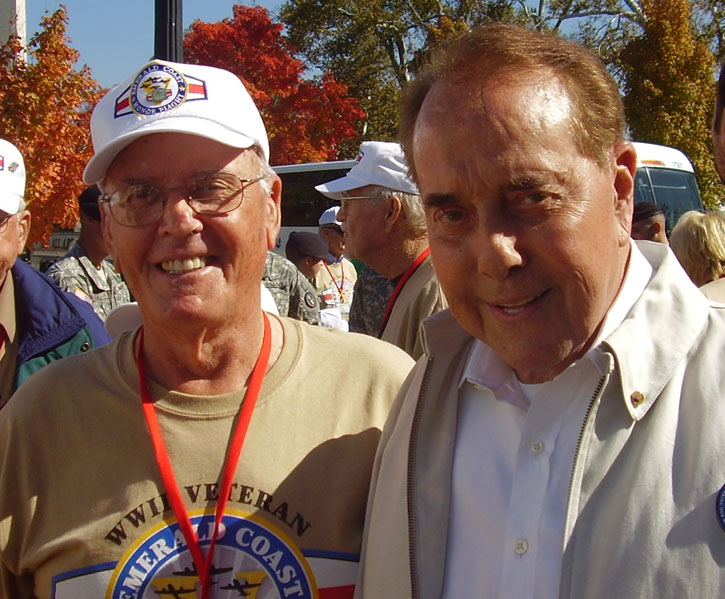 Ward, who was elected to served as Escambia County’s probate judge from 1973 to 1989, said he enjoyed meeting Dole, a former presidential candidate.
Ward, who was elected to served as Escambia County’s probate judge from 1973 to 1989, said he enjoyed meeting Dole, a former presidential candidate.
“It was all spectacular,” he said. “Absolutely spectacular.”
When the veterans arrived back in Pensacola Wednesday night, many received handmade thank-you cards from students at Ernest Ward Middle School.
Click here for a gallery of photos by veteran Billy Ward as he shows us the Honor Flight through his own eyes. The photos are in sequential order, following the trip from Pensacola to Washington and back.
Other North Escambia area veterans on Wednesday’s Emerald Coast Honor Flight include Robert Joiner of Molino, John Clarence Smith of Jay, James Ward of Jay, and Morris Clarence Ward of Jay. Suzanne Vickrey of Molino was also on the trip, serving as a guardian.
Pictured top: The Emerald Coast Honor Flight allowed 103 veterans to visit the World War II Memorial in Washington for the first time on Wednesday. Pictured inset: Billy Ward Of Walnut Hill meets former U.S. Sen. Bob Dole. Pictured below: The veterans’ view as they were welcomed back to Pensacola Wednesday night. NorthEscambia.com photos by veteran Billy Ward, click to enlarge.
Photos: North Escambia Treated To Sun Dog Phenomenon
October 21, 2009
Residents across North Escambia were treated to a weather phenomenon call “sun dogs” about 3:00 Wednesday afternoon.
Sun dogs are atmospheric phenomenon that creates bright spots, like mini-suns, in the sky. They are caused by ice crystals in high and cold cirrus clouds. They can appear anywhere in the world during any season. They always appear at the same altitude as the sun.
Pictured above: Sun dogs around the sun Wednesday afternoon. (Note: The bright spots to the left and right of the sun were much brighter, but our skills photographing the afternoon sun are weak.) Pictured below: Another sun dog appeared in the eastern sky, directly opposite the sun. NorthEscambia.com photos, click to enlarge.
Video: NHS Tribal Beat Performs With All South High School Band
October 20, 2009
The Northview High School Tribal Beat Band participated in the All South Band Day at the University of Southern Mississippi recently.
The Tribal Beat members as well as the other participating bands were given the music for “The Hand That Feeds” by Nine Inch Nails and received instructions from USM band members, instructors, band directors and others.
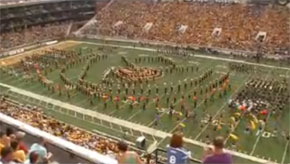 After working in sectionals for about 45 minutes, the entire All South High School Band — including the NHS Tribal Beat — took to the practice filed to prepare for the Southern Miss halftime show. The Northview students were able to watch part of the USM Golden Eagles football game against Virginia before taking the field to perform with USM’s band “The PRIDE” at halftime.
After working in sectionals for about 45 minutes, the entire All South High School Band — including the NHS Tribal Beat — took to the practice filed to prepare for the Southern Miss halftime show. The Northview students were able to watch part of the USM Golden Eagles football game against Virginia before taking the field to perform with USM’s band “The PRIDE” at halftime.
“This was definitely a wonderful music educational experience for all who participated, not to mention really, really fun,” said NHS Tribal Beat Band Director Scott Slay. “I look forward to taking NHS to this event again as well as others.”
For more submitted photos, click here.
If you do not see the video above, it is because your employer, school or personal firewall is blocking external videos. Submitted video for NorthEscambia.com.
Pictured above: Northview Tribal Beat Band members watch a University of Southern Mississippi football game prior to performing during the halftime show. Pictured inset: The USM band “The PRIDE” and the All South High School Band perform. Submitted photos for NorthEscambia.com, click to enlarge.
Molino Park Students Study Egypt In Global Corner Program
October 19, 2009
Students at Molino Park Elementary School took a grand field trip last week to the faraway world of Egypt, thanks to Pensacola non-profit organization called The Global Corner International Learning Center.
During the week, Molino Park students learned how to write their numbers from waahid to ashara (1-10) or about hieroglyphs and the history of writing; about ancient and modern Egyptian musical instruments and dances; what it’s like to be growing up in Egypt today; about the world during Ancient Egyptian times (including how the Egyptians used a dung beetle as an important symbol); and how to say their color and shape words in Arabic or about the Ancient Egyptian art schema.
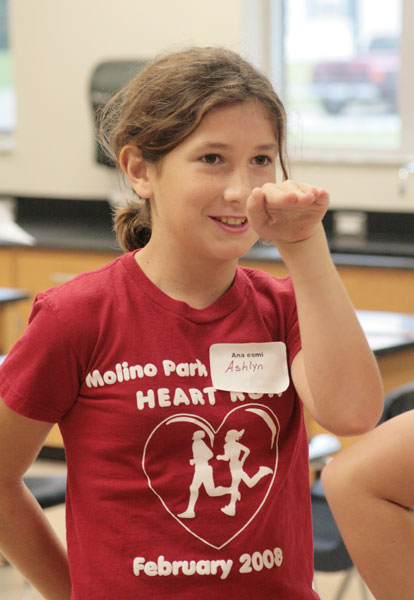 “Our goal is to help children understand the world around them,” Global Corner founder Lee Little said. “We bring the world to life one child at a time.”
“Our goal is to help children understand the world around them,” Global Corner founder Lee Little said. “We bring the world to life one child at a time.”
Little founded the Global Corner after she retired from the Navy in 2006.
“I went from being in charge of 400 people and 100 airplanes to being a teacher out of my station wagon,” Little, the former commodore of Training Air Wing 6 at Pensacola Naval Air Station, said. “I think it is important that children learn about the world around them.”
Little, who speaks Japanese, chose Japan for the first Global Corner lessons because she once lived there. That was followed by Spain last year, to coincide with Pensacola’s 450th birthday observance with the visiting Spanish tall ship Juan Sebastián de Elcano King Juan Carlos I and Queen Sofia of Spain.
She picked Egypt for this year’s lesson because she wanted a country on the African continent, and “Egpyt is such a fun place. All of the kids of hear about it”.
Little spent time in a foreign policy think tank, helping to shape the United State’s understanding of North and South Korea. She would tell people about her job and realized that Americans just did not understand the world around them.
“You could meet people and talk to them about foreign countries, and their eyes would just glaze over. Americans, in general, just don’t know much about the world around them.”
 With a Master’s degree in international affairs, she saw two possible ways to bring a worldly understanding to residents of Pensacola and surrounding communities. The obvious choice seemed to be becoming a college professor, but she decided to start a little younger with the Global Corner.
With a Master’s degree in international affairs, she saw two possible ways to bring a worldly understanding to residents of Pensacola and surrounding communities. The obvious choice seemed to be becoming a college professor, but she decided to start a little younger with the Global Corner.
Molino Park’s Egyptian adventure did not end with last week’s classroom presentations. The Global Corner has a website — theglobalcorner.org — where parents and children can visit to learn more about Egypt and the Global Corner program. Since the program is presented in area schools for free, the organization also needs donations to continue their programs. Details on on the website.
Molino Park is not the only North Escambia school that will visit Egypt this school year via the Global Corner. The program is scheduled to visit Jim Allen Elementary January 11-15, Bratt Elementary January 21-22 and Byrneville Elementary April 6-8.
Lee said she plans to offer the program again next school year with a visit to a South American country, mostly likely Brazil.
Click here for more photos from Global Corner at Molino Park Elementary.
Pictured top: Students learn about Egypt during Global Corner week at Molino Park Elementary School. Pictured top inset: Learning to “walk like an Egyptian” is a necessity when learning about the country. Pictured inset: Students created Egyptian art. Pictured below: Global Corner at Molino Park. NorthEscambia.com photos, click to enlarge.


